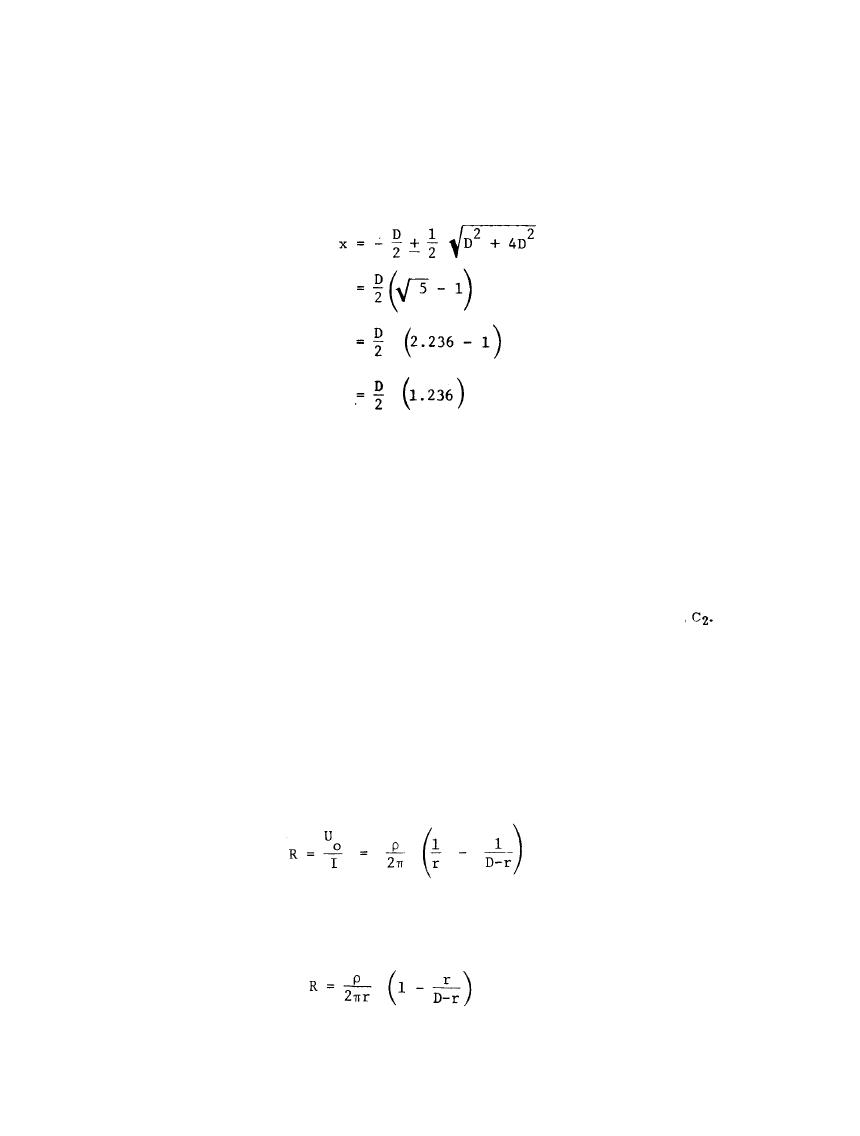

Custom Search
|
|

|
||
 MIL-HDBK-419A
which can be solved as follows:
(2-47)
= 0.618D
Thus the true value of resistance to earth corresponds to the ratio of the potential difference to the measured
current when x is 62 percent of the distance, D, from the electrode under test to the current probe,
It is
important to remember that D is measured from the center of the electrode under test to the center of the
current probe and that D is large relative to the radius of the electrode under test.
Figure 2-17 shows an example of data taken with the fall-of-potential method. The correct resistance of
13 ohms corresponds to the potential probe location of 27.4 meters (90 feet) which is 62 percent of the distance
to the current probe.
Resistance of the electrode under test with respect to infinity (the true definition of the resistance to earth) is
(2-48)
Thus any value of D less than infinity causes the measured resistance to be in error. The error can be estimated
by observing that
2-40
|
 |
|
 |
||